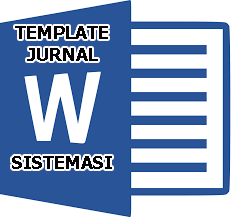Lung Cancer Classification using the Naïve Bayes Method with SMOTE
Abstract
Keywords
Full Text:
PDFReferences
S. Andarini, A. A. Santoso, M. A. Arfiansyah, et al., “Indonesian Society of Respirology Position Paper on Lung Cancer Control in Indonesia,” J. Respirologi Indones., Vol. 44, No. 4, Dec. 2024, doi: 10.36497/jri.v44i4.884.
A. F. Hamdani, W. Purbaningsih, and W. Y. Nalapraya, “Karakteristik Demografi dan Klinikopatologi Pasien Kanker Paru di RSUD Al−Ihsan,” J. Ris. Kedokt., pp. 97–102, Dec. 2023, doi: 10.29313/jrk.v3i2.2959.
R. Prakasha, M. Urs, and S. Babu, “International Journal of Intelligent Systems and Applications in Engineering Machine Learning Approach for Lung Cancer Detection and Classification-A Comparative Analysis,” Mar. 2024. [Online]. Available: www.ijisae.org
B. Dunn, M. Pierobon, and Q. Wei, “Automated Classification of Lung Cancer Subtypes using Deep Learning and CT-Scan based Radiomic Analysis,” Bioengineering, Vol. 10, No. 6, Jun. 2023, doi: 10.3390/bioengineering10060690.
Suprapto, “Improvement Naive Bayes menggunakan Forward Selection, Information Gain dan Gain Ratio untuk Penanganan Independensi Fitur,” J. Sos. dan Teknol., Vol. 5, No. 4, 2025.doi: 10.59188/jurnalsostech.v5i4.32084
Q. An, S. Rahman, J. Zhou, and J. J. Kang, “A Comprehensive Review on Machine Learning in Healthcare Industry: Classification, Restrictions, Opportunities and Challenges,” May 01, 2023, MDPI. doi: 10.3390/s23094178.
D. Silviana Halawa and R. Mahyuni, “Implementasi Naive Bayes pada Sistem Pakar untuk mendiagnosa Penyakit Kelenjar Limfa (Getah Bening),” Nov. 2024, [Online]. Available: https://ojs.trigunadharma.ac.id/index.php/jsi
H. P. Almeyda, Z. F. Khoiri, M. S. Haris, N. H. Alkaff, and S. Sukmadiningtyas, “Implementation of K-Nearest Neighbor Algorithm for Classification of Lung Cancer Causes,” JURTEKSI (Jurnal Teknol. dan Sist. Informasi), Vol. 11, No. 1, pp. 37–44, Dec. 2024, doi: 10.33330/jurteksi.v11i1.3305.
R. Alifahasni Zakiah, S. Wahjuni, and W. B. Suwarno, “Pemilihan Algoritma Machine Learning untuk Perangkat dengan Komputasi Terbatas pada Deteksi Kematangan Buah Melon Berjala Selection of Machine Learning Algorithms for Limited Computing Device in Netted Melon Ripeness Detection,” 2023. [Online]. Available: http://journal.ipb.ac.id/index.php/jika
D. Juliani and M. Soleh, “Implementasi Machine Learning untuk Klasifikasi Penyakit Kanker Paru menggunakan Metode Naïve Bayes dengan Tambahan Fitur Chatbot (Implementation of Machine Learning for Lung Cancer Classification using Naïve Bayes Method with Additional Chatbot Features),” Aug. 2024. [Online]. Available: https://www.kaggle.com/datasets/mysarahmadb
D. Septhya, K. Rahayu, S. Rabbani, V. Fitria, Y. Irawan, and R. Hayami, “MALCOM: Indonesian Journal of Machine Learning and Computer Science Implementation of Decision Tree Algorithm and Support Vector Machine for Lung Cancer Classification Implementasi Algoritma Decision Tree dan Support Vector Machine untuk Klasifikasi Penyakit Kanker Paru,” Vol. 3, pp. 15–19, 2023. doi:10.57152/malcom.v3i1.591
S. S. Berutu, H. Budiati, J. Jatmika, and F. Gulo, “Data Preprocessing Approach for Machine Learning-based Sentiment Classification,” J. INFOTEL, Vol. 15, No. 4, pp. 317–325, Nov. 2023, doi: 10.20895/infotel.v15i4.1030.
R. Taufik, R. Jimah, and A. Solichin, “Implementasi dan Analisis Model Machine Learning Decision Tree untuk Deteksi Akun Palsu di Twitter,” J. MEDIA Inform. BUDIDARMA, Vol. 8, No. 2, p. 797, Apr. 2024, doi: 10.30865/mib.v8i2.7548.
M. Guntara and F. D. Astuti, “Komparasi Kinerja Label-Encoding dengan One-Hot-Encoding pada Algoritma K-Nearest Neighbor menggunakan Himpunan Data Campuran,” JIKO (Jurnal Inform. dan Komputer), Vol. 9, No. 2, p. 352, Jun. 2025, doi: 10.26798/jiko.v9i2.1605.
M. K. Suryadewiansyah, T. Endra, and E. Tju, “Jurnal Nasional Teknologi dan Sistem Informasi Naïve Bayes dan Confusion Matrix untuk Efisiensi Analisa Intrusion Detection System Alert,” Aug. 2022, doi: 10.25077/TEKNOSI.v8i2.2022.081-088.
DOI: https://doi.org/10.32520/stmsi.v14i6.5607
Article Metrics
Abstract view : 477 timesPDF - 73 times
Refbacks
- There are currently no refbacks.

This work is licensed under a Creative Commons Attribution-ShareAlike 4.0 International License.









